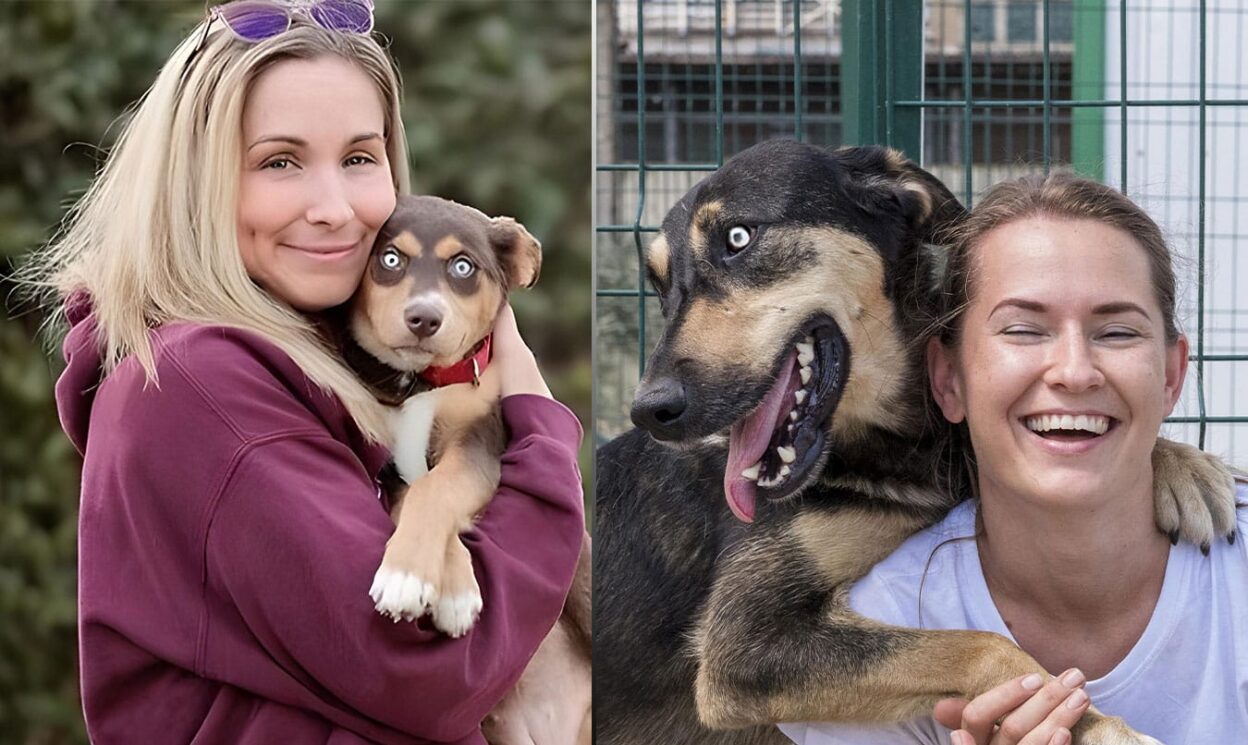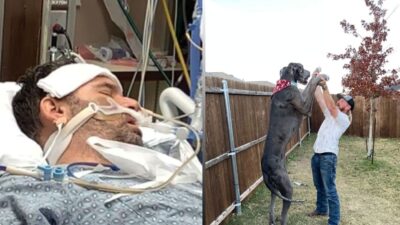Adopting a stray dog is often seen as an act of kindness—a chance to give a homeless animal a better life. For many dog lovers, these dogs, especially those with unique features, tug at the heartstrings. However, an adopted stray dog can come with unexpected risks. Aggressive stray dog behavior is something that can develop over time, leading to frightening consequences.
In a chilling turn of events, a woman who adopted a stray dog from a graveyard—a dog with striking white eyes—soon found herself dealing with an aggressive dog that bit her and sent her to the hospital. This story serves as a crucial reminder of the stray dog adoption risks and the unpredictable nature of dog behavior.
The Unlikely Adoption: A Stray Dog with White Eyes
It was a cold morning when the woman found the dog in the graveyard. The dog, with unique white eyes, was unlike any other she had seen before. Its appearance was almost mystical, yet she couldn’t ignore the pitiful look in its eyes. The woman, a long-time dog lover, couldn’t resist taking the stray dog home, hoping to offer it a better life.

At first, the dog seemed gentle and well-mannered, and the woman quickly grew attached. She named the dog “Ghost” because of its unusual eyes and ethereal presence. Ghost settled into her home, and for months, everything seemed normal. The woman was overjoyed to have given a homeless dog a chance for a better life, and she thought she was helping a vulnerable animal in need.
But little did she know that adopting a stray dog could come with unexpected challenges.
Strange Dog Behavior Changes: A Sudden Shift
Over time, something changed in Ghost. His behavior, once calm and affectionate, became increasingly erratic. The dog started to show signs of unease, often growling at unfamiliar sounds or even the woman herself. At first, it was just small signs—avoiding certain areas of the house or barking loudly at shadows. But soon, these behaviors escalated.
The dog’s aggression was unpredictable—one moment, he was lying peacefully on his bed, and the next, he would snap at anything that came near him. The woman was concerned but believed that Ghost might simply be adjusting to his new home. She tried to remain patient, but the aggression began to grow.

The tipping point came one afternoon. The woman was petting Ghost, trying to calm him after a particularly aggressive outburst, when the dog suddenly lunged at her. His bite was quick and powerful, sending her to the hospital with severe injuries.
Aggression in Adopted Dogs: Why Does It Happen?
What went wrong? How did a dog, once sweet and gentle, turn aggressive? There are several potential reasons for aggression in adopted dogs, especially in strays. Understanding these can help prevent similar situations.
1. Fear and Trauma
Many stray dogs have experienced significant trauma in their lives, which can manifest as aggression. Dogs that have been abandoned, abused, or neglected might develop fear-based aggression. They may have learned to lash out in self-defense, especially in situations that remind them of past trauma. The woman’s dog, Ghost, may have experienced abuse before his rescue, which could explain his sudden aggression.

2. Lack of Socialization
Stray dogs often miss out on early socialization, which is crucial for healthy behavior. If a dog was not exposed to positive interactions with people or other dogs as a puppy, it can lead to strange dog behavior changes in adulthood. Ghost might have been unaccustomed to certain household dynamics, and as he grew, these deficiencies in socialization became more pronounced.
3. Health Issues
Health problems, such as pain or illness, can make a dog irritable and more likely to become aggressive. If Ghost had an underlying medical issue—such as a neurological disorder, infections, or even injuries from his time as a stray—this could have contributed to his aggressive behavior.

How to Deal with Aggressive Dogs: Tips for Dog Lovers
While aggressive stray dog behavior can be daunting, there are ways to manage and even prevent it. Here are a few tips for dog lovers who are dealing with an aggressive dog:
1. Get Professional Help
If a dog shows signs of aggression, it’s important to consult a professional. A veterinary behaviorist or certified dog trainer can assess the dog’s behavior and help you understand the cause. Professional guidance can help you develop a training plan to manage aggression and prevent bites.
2. Consistency is Key
Training an aggressive dog requires consistency. This includes reinforcing positive behaviors and addressing negative behaviors immediately. Establishing clear boundaries and sticking to a routine can help the dog feel more secure and less anxious, reducing the likelihood of aggression.

3. Avoid Triggers
If you notice certain situations or actions trigger aggression in your dog, avoid them until you can work through the issue with a professional. For example, if the dog is territorial around food, it’s important to manage mealtimes carefully to avoid conflict.
Conclusion: The Importance of Understanding Dog Behavior
The woman’s experience with her adopted stray dog turning aggressive is a powerful reminder that adopting a stray dog comes with its challenges. While many stray dogs make wonderful companions, there are also risks—such as stray dog adoption risks—that dog lovers need to be aware of. Understanding the potential causes of aggression and knowing how to deal with aggressive dogs can make a huge difference in fostering a positive relationship with your pet.
If you are thinking of adopting a stray dog, remember to be patient, invest time in training, and be prepared for the unexpected. Aggressive stray dog behavior can be managed with the right tools and support, but it requires diligence and understanding.
Share your thoughts in the comments—have you ever dealt with unexpected aggression in a rescued dog? How did you handle it?





